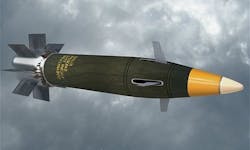DARPA seeks to develop affordable smart weapons seeker for navigation and terminal homing
ARLINGTON, Va., 28 April 2015. U.S. military researchers will brief industry May 11 on an upcoming project to develop a small, lightweight, and affordable seeker prototype that provides navigation and precision terminal homing for smart weapons.
Officials of the U.S. Defense Advanced Research Projects Agency (DARPA) in Arlington, Va. will conduct industry-day briefings for the Seeker Cost Transformation (SECTR) program from 9 a.m. to 3:30 p.m. easter time on 11 May 2015 at the DARPA Conference Center, 675 N. Randolph St., in Arlington, Va.
Prototype seekers should be able to attack moving, relocatable, and stationary targets in varied terrain where Global Positioning System (GPS) satellite navigation may not be reliably available, DARPA officials say.
The seeker prototype should be low cost and low-size, weight and power (SWaP); have passive day and night sensors -- especially for extremely low light); and provide navigation and precision terminal homing to a weapon platform.
A formal request for proposals for the SECTR program may be issued close to the time of the industry-day briefings. The program solicitation number will be DARPA-SN-15-45.
Related: Smart munitions to track and kill sources of RF jamming
Companies interested in attending should register no later than 7 May 2015 online at https://safe.sysplan.com/confsys/sectr. The briefings are free to attend.
DARPA officials will conduct the briefings at the Secret security level, so all participants will require a Secret personnel security clearance. All attendees must present government-issued photo identification.
One-on-One meetings can be scheduled on a first-come, first-served basis through the registration website. Only one session can be booked per organization.
Email questions or concerns to DARPA at [email protected]. More information is online at https://www.fbo.gov/spg/ODA/DARPA/CMO/DARPA-SN-15-45/listing.html.

